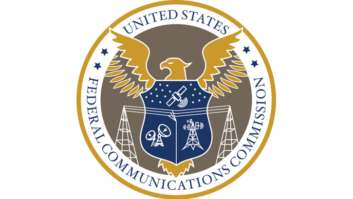Radio World’s “Guest Commentaries” section provides a platform for industry thought leaders and other readers to share their perspective on radio news, technological trends and more. If you’d like to contribute a commentary, or reply to an already published piece, send a submission to [email protected].
Remember the Progressive Insurance commercial where the life coach, in an attempt to avoid a student’s awkward outburst at seeing someone with blue hair, carefully mutters “we all see it, we all see it.” It doesn’t work of course. The honest but oblivious student blurts out “he has blue hair.”

Reading the FCC’s recent Report & Order reinstating the annual public filing of an EEO form to collect race, ethnicity and gender information on broadcast station employees was kind of like watching that Progressive commercial.
Despite commenters raising legitimate legal concerns about the form’s data being made public on a station-by-station basis, the FCC majority marched straight past those concerns to mandate that the form be specific to a station and in the station public file. The justifications for making it public are flimsy at best and themselves raise new concerns.
Here’s the crazy thing: The majority’s objective could have been accomplished without the data being public, and it may have even resulted in a 5–0 vote in favor. Cue in the Progressive commercial. We all see it. It’s classic regulatory overreach, the kind that results in legal challenges, confusion, tough decision making and potential liability for broadcasters.
Imagine as a broadcaster trying to complete the form later this year by selecting an employee’s race, ethnicity or gender, realizing in a unique situation that you don’t have the information needed for 100% certainty, seeing that the form instruction allows you to make an informed guess, doing so, and then having the employee or someone else challenge the accuracy of the submitted form. Or, what if someone files a complaint that the station licensee is attempting to mislead the FCC? That’s no fun. Yet one of the R&O’s justifications for making the form public was to “increase the likelihood that erroneous data will be discovered and corrected,” and to “incentivize stations to file accurate data to avoid third-party claims that submitted data is incorrect.”
Does the majority not trust broadcast licensees? This one example opens a Pandora’s box of questions, some of which may require a stop at your employment attorney for advice.
Then there’s the constitutional law question as to whether making the report public is designed to ensure that individual businesses are targeted and pressured into making hiring decisions based on race and gender.
The FCC’s two prior efforts to collect and require disclosure of employee demographic data after the Supreme Court found employee quotas unconstitutional were shot down in court on — you guessed it — constitutional grounds, violations of the Due Process Clause of the Fifth Amendment. The FCC majority dodges that sticky question, choosing an approach that is likely to draw a legal challenge, and not withstand court review. We all see it. Commissioner Brendan Carr not only saw it, but spoke it in his dissent, declaring that “this is no benign disclosure regime” and pointing to “activist groups” as the catalyst for requiring public disclosure of the collected employment data.
So here we are. Trying to understand a new rule, one for which there is no new form or form instructions yet, one that still has to be approved at the Office of Management & Budget, and one that will likely draw a legal challenge that throws an unknown wrench into whether broadcasters will have to file it this fall. The new requirement has blue hair. It’s the public disclosure. We all see it. But the FCC majority didn’t care and blurted it out anyway.
This commentary appeared in the broadcast newsletter of law firm Hardy Carey Chautin & Balkin LLP.




